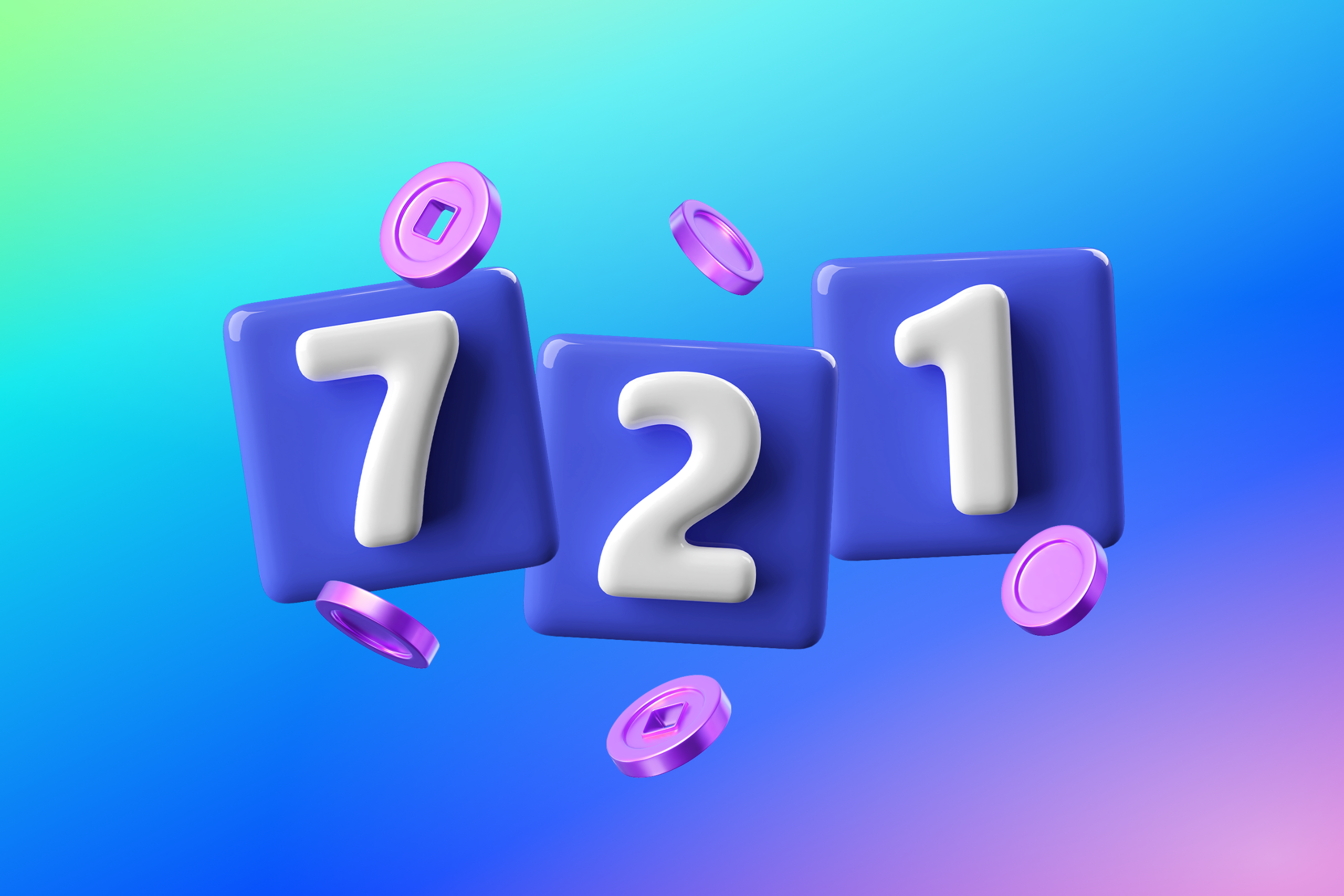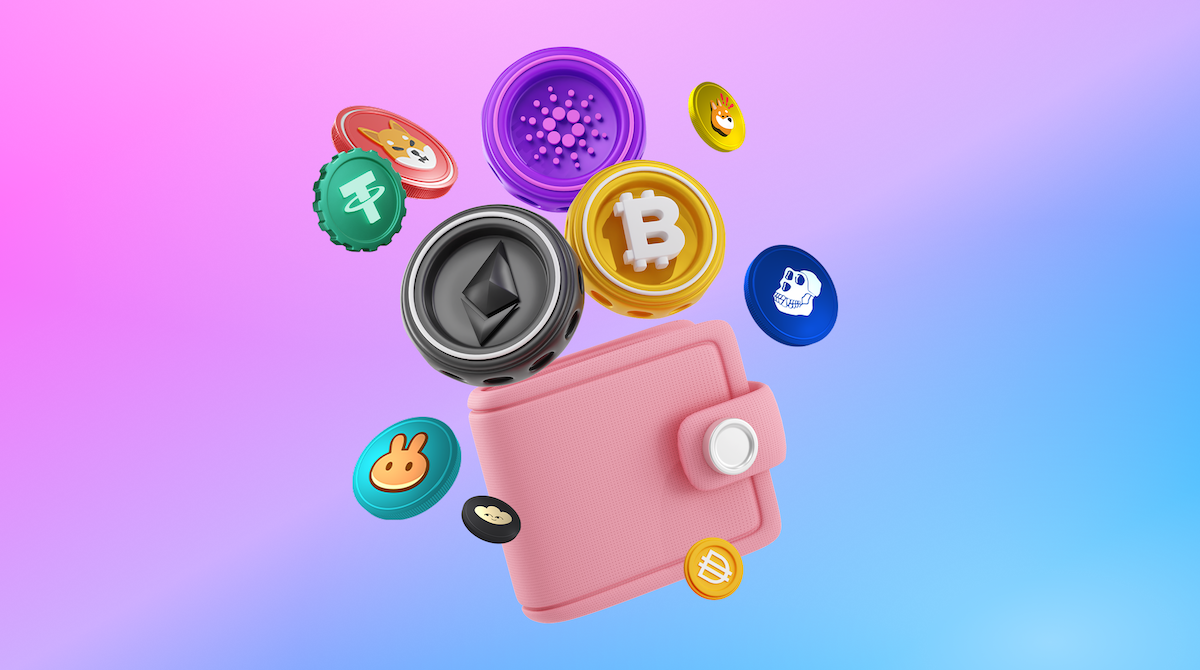
A crypto wallet helps you buy, sell, and store your cryptocurrency and (in many cases) your NFTs.
What is a crypto wallet?
In simple terms, a crypto wallet helps you buy, sell, and store your cryptocurrency and (in many cases) your NFTs. Going a level deeper, a crypto wallet manages access to your private key, which is needed to control a blockchain wallet address.
Important distinction: Your cryptocurrency and NFTs are not stored in/on a crypto wallet; they remain on the blockchain and can be accessed, controlled, and managed through use of a crypto wallet.
Think of your wallet as the key to your address on the blockchain. You use the key to:
- Access what’s inside (NFTs, tokens)
- Send or receive items to/from your blockchain address
Just like any key, protecting your private key or seed phrase is critical.
Custodial vs. Non-Custodial Wallets
There are two main types of crypto wallets: custodial (also called “hosted”) and non-custodial (or "self-custodied") wallets. Custodial wallets are managed by a third-party company, whereas a non-custodial wallet is not. Custodial wallets are akin to keeping the key to your safe at a secure facility operated by a third-party (who will verify your identity in some way before giving you the key), and non-custodial wallets are akin to keeping your key with you or at your home.
Custodial wallets therefore require less responsibility, but are at the mercy of the third party (like, if the third-party’s facility was robbed).
Non-custodial wallets give you full control but also mean you have to be extra careful (like, not losing your key or accidentally throwing it away when you reorganize your closet).
Software vs. Hardware Wallets
Non-custodial wallets include software and hardware wallets. These are also known as "hot wallets" and "cold wallets."
A software wallet (or hot wallet) is a program that lives on your computer, mobile device or on your internet browser. This makes software wallets a great option for quickly and conveniently buying, selling, and transferring NFTs and cryptocurrency.
A hardware wallet (or cold wallet) is a physical device that you may need to plug into your computer to use. Because it’s not always connected to your computer or browser, it’s a great option for long-term secure storage but is a bit less convenient for fast or frequent transactions.
Software and hardware wallets typically require you to set up your own password or pin to access the wallet. This password or pin is different than the seed phrase used to regenerate your private key.
Crypto wallets and NFTs
Different wallets support different blockchains, and not all wallets support NFTs. To buy, sell, and create NFTs using OpenSea, you can either connect an existing NFT-compatible wallet, or create a self-custodied wallet with just your email address on OpenSea, using Privy.
Here are some other wallets compatible with OpenSea:
- Metamask (Ethereum, Polygon, Klaytn)
- Coinbase Wallet (Ethereum, Polygon, Klaytn)
- See the full list of compatible wallets.
What is a seed phrase?
A seed phrase, also sometimes known as a recovery phrase, mnemonic phrase, or seed mnemonic, is used to back up and recover a crypto wallet. It consists of a set of words in a specific order that are randomly generated. A seed phrase is typically made up of 12, 18, or 24 words, although some wallets might use different lengths.
The seed phrase:
- Is a human-readable backup of your private key
- Allows you to restore wallet access if lost
- Must be stored offline and securely
It's crucial to keep your seed phrase secure and private. Anyone who gains access to your seed phrase can access your wallet. Many people store their seed phrases offline in a physically secure location, such as a safe or a security deposit box. It's generally not recommended to store your seed phrase digitally or online, as that may increase your risk of exposure.
What is a private key?
A private key is generated during the process of creating a crypto wallet and serves as a digital signature proving ownership of the contents of cryptocurrency and/or NFTs stored at a specific public blockchain address.
Here's how it works:
Public Address: A crypto wallet is associated with a public address, which is a long string of characters. On the Ethereum blockchain, these are 42-character strings and begin with “0x” as a prefix. This public address is what you share with others when you transact on the blockchain. Think of it like an email address; anyone who knows it can send you emails and you can send emails from that address.
Private Key: The private key is a randomly generated string of characters, typically around 64 characters in length. It's kept secret and is essentially the password to access and control your wallet and whatever is stored at the related public address. Think of this like the password to your email account.
Access and Transactions: When you want to send tokens from your public address to another public address, you use your private key to digitally sign the transaction. This signature proves that you have verified access to the tokens at the public address and authorizes the transfer.
How to fund your crypto wallet
Adding funds directly to your wallet
Many NFT-compatible wallets, including the wallet you can create on OpenSea using Privy, support adding cryptocurrency directly into your wallet by using a service such as Moonpay. These can be integrated into the wallet interface, and allow you to buy cryptocurrency using a credit or debit card and skip the process of using a crypto exchange. You may be prompted to verify your identity during this process.
Transferring cryptocurrency from a crypto exchange
Another option is to buy cryptocurrency using an exchange like Coinbase. Usually, when you buy cryptocurrency using an exchange, the cryptocurrency will be deposited in a custodial wallet managed by that exchange, most of which are not compatible with NFTs. So in order to fund your crypto wallet, you have to transfer the cryptocurrency from the custodial exchange wallet to your other wallet. For example, if you bought ETH using Coinbase, you’d need to send it from your custodial Coinbase wallet to your Metamask wallet to buy NFTs using that ETH.
The advantage of this method is that there aren’t the same maximums that there might be when you deposit cryptocurrency directly into your wallet using a service like Moonpay.
How to protect your crypto wallet
Just like any other valuables, you’ll want to employ some best practices for keeping your crypto wallet safe. Here are some tips:
- Don’t reuse passwords: Make sure your crypto wallet password isn’t being used on any of your other accounts. Software wallets have their own passwords, and hardware wallets often have pins/passwords.
- Protect your seed phrase: When you set your wallet up, store your seed phrase somewhere you won’t forget, but isn’t easily accessible by others. Never share your seed phrase with anyone.
- Don’t click links you don’t recognize: This is especially true if someone sent you a link directly.
Connecting your crypto wallet to OpenSea
Once your crypto wallet is set up, connecting it to OpenSea is easy. Click the “Login” button in the top right corner of the OpenSea site and it’ll walk you through connecting your wallet or logging in with your email. After that, you can choose to fill out the rest of your OpenSea profile.
Any time you try to take an action that gets recorded on the blockchain, like purchasing an NFT or token, you’ll be prompted to connect your wallet and authorize the action.
How does the OpenSea “log in with email” wallet work?
The OpenSea “log in with email” wallet experience is powered by Privy. When you log in with your email address, a self-custodied wallet is created on the backend. OpenSea does not manage or control this wallet.
🧠 Q&A

Sign up for our newsletter
Join our newsletter to get web3 news, updates, interviews, and deep dives all in one place.
Featured NFT Articles
View all.png)
.png)
.png)
.png)
.png)
.png)



.jpeg)



